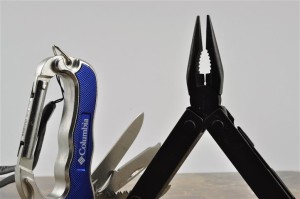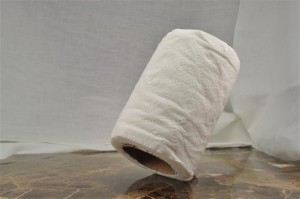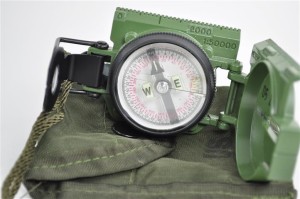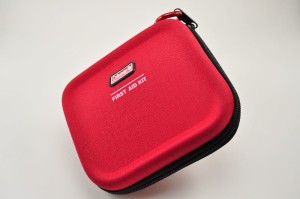Go Prepared!
GEAR – What Do I Really Need To Bring? As a Geocacher you must be prepared before you leave your house and start your next adventure.
Our hobby, sport, way of life (whatever you want to call it), is vastly different than most past times. Geocaching has grey lines that just barely cross over into other genres of outdoor activities. We can be geeks (there, I said it), outdoorspeople, walkers, hikers, bikers, kayakers (or just yakers), drivers, riders, scouts, planet advocates, statisticians, and collectors all while Geocaching.
Customize Your Gear
How you prepare depends on your role(s) for the day. Stacie and I set out to hike Pike’s Peak a few years back. We had something for every contingency that might have come up. If Bigfoot came diving out of a tree and captured us, we had what we needed to escape. My backpack weighed around 40 pounds. Did we need everything that we hauled up the mountain? Nope. We should have packed the essentials and then took a hard look at what else we packed. After all, our roles that day were hikers, not campers! A few weeks prior to our planned trip two hikers had to be rescued from the mountain and they spent a cold night lost in the woods and suffered frostbite. I wanted to prevent us from having the same experience but I should have planned smarter instead of being a pack mule.
The lists below are just starting points. Tailor what you bring by your personal needs.
 General Items
General Items
(You will need these regardless of which activity you perform)
- A Buddy
- Water
- GPSr or smartphone
- Backpack
- Energy bar or snack
- Toilet Paper
- Compass
- Spare Batteries
- Cell phone
- Pen
- Spare logs/containers
- Flashlight
- Multi-tool (Leatherman, Swiss Army Knife, etc.)
- Sun block
- Bug spray
- Trash bag
- Tweezers (To remove logs from containers, oh, and cactus needles)
- Replacement logs (For caches under the weather)
Hiking
- Good shoes
- Walking stick (optional)
- Trail map/GPSr with parking or trailhead marked
- Whistle
Biking
- Helmet
- Spare tube
- Air pump
- Bike Multi-tool
- Lights (So you can see and others can see you)
 Kayaking/Canoeing
Kayaking/Canoeing
- Life Jacket (Wear it, don’t sit on it)
- Rope (For towing or rescue, etc.)
- Launch/Recovery plan (Ensure all participants know how you will get everyone and their equipment back to where they need to be.)
- Required lights at dusk/dawn/night.
- Dry bag/box (Keep your phone and keys here.)
Being prepared isn’t just a motto for a youth organization. It makes sense. Be a smart Geocacher and hit the trail, road, waterway, or whatever your playing field, with the essential tools needed to protect your safety and comfort.
Here is a comment that geocacher Gackt submitted:
In our area of the UK we have a number of difficult underground caches set in quarries, pot holes, and rift caves. An example of one is this cache: GC2GAMT, which was Groundspeak’s Geocache of the week a short time ago. We obviously need special equipment for these types of caches. Below I have cut and pasted straight from the above cache page to list the usual equipment needed:
1. Head protection. *minimum, highly recommended.
Cheap builders helmets will initially do. Worth getting if you plan to do more Below Aboves and you WILL bang your head in places.
2. Stout walking/hiking boots with good grip. Keep a pair of ordinary boots or shoes in the car to change into. The boots will get muddy.
3. A boiler suit or an additional layer of clothes to remove to protect your car and look descent in the pub afterwards.
4. Gloves, the stone is cold and sometimes wet/muddy. Gardening gloves are fine..
5. Good torch with backup torch. *minimum, highly recommended. Ideally you want a head torch to keep hands free for climbing. Spare batteries.
6. Guide – Ideal if you’re unsure. Maps/surveys are available if you can find the name of the quarry and are willing to purchase one from a source. Contact me for more information.
7. Pen/Pencil & Paper to record notes, were pictures taken.
8. Camera, extra flashes, tripod for long exposure shots.
As a group I recommend food, water, first aid.
I would personally add to the COs list:
– A UV torch, needed to obtain some clues for some caches. Also finds some other interesting markings left by other explorers.
– Wellies, instead of walking boots. They can often grip better, and are better in deep mud.
– Most importantly is something you cannot carry with you.. a PAF (Phone A Friend). If there is one thing you can learn from the movie ‘127 Hours’, it is to let someone know where you are going, and when you should be back (or out in the daylight from underground, in our cases).
Keep up the good work,
Gackt.

